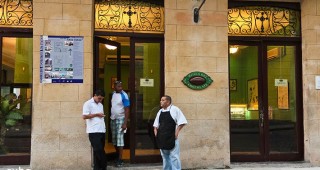Any visitor to Havana from Varadero cannot help but notice that, shortly after the skyline of Havana appears on the horizon, you are submerged underneath the bay in a tunnel that is clearly a relic of the mid-twentieth century. Linking the historic forts on the eastern bank with the ornate Spanish architecture in the Old City, the Túnel de La Habana (Havana’s Tunnel) or the Túnel de la Bahía (the Bay’s Tunnel) would be forgettable if not for the eerie feeling that you get when you wonder how well the tunnel is kept up. But the tunnel has had a fascinating history, bringing locals and foreigners alike to the great city of Havana for over fifty years. Indeed, before the tunnel, people had to travel approximately 25 kilometers around Guanabacoa to cross the harbour whereas now it only takes driver 45 seconds traveling at a speed of 60 kph to reach the other side.
While the 733 meter-long tunnel was built between 1957 and 1958 by the French company French Societé des Grand Travaux de Marseille, the excavation work was conducted by the Cuban company Perforadora Panamericana owned and operated by Cuban engineers Gerardo and Fernando Pérez Puelles. In 2000, the tunnel’s maintenance was taken over by the Vinci Group, the leading construction company worldwide.
Although cars from the 1950s still pass through the tunnel every day, vehicles of all kind have used it. During the difficult times of the so-called Special Period in the 1990s when public transportation deteriorated to such an extent, Chinese bicycles and ciclobús –buses without any seats that transported bikes and riders across the bay via the tunnel –were a common sight. If you pay attention when you pass through the tunnel, you may catch a glimpse of one of these buses in operation today.
For many Cuban children, the tunnel is a fantasy, on the same level with riding a roller coaster or the Ferris wheel. For myself, the tunnel was the setting for some of those passionate moments of youth. There, more than once, my hand found its way to the hand of the girl who I had been courting for a long time. The tunnel also opened up my world. There was a time in the 1980s when spending the day at Santa Maria beach with our friends was practically a religion –an outing unlikely without the tunnel. While the tunnel may seem like a necessary but unnoticeable gateway that one must pass through, it can mean so much more and is worthy of our attention.





 Other
Other





